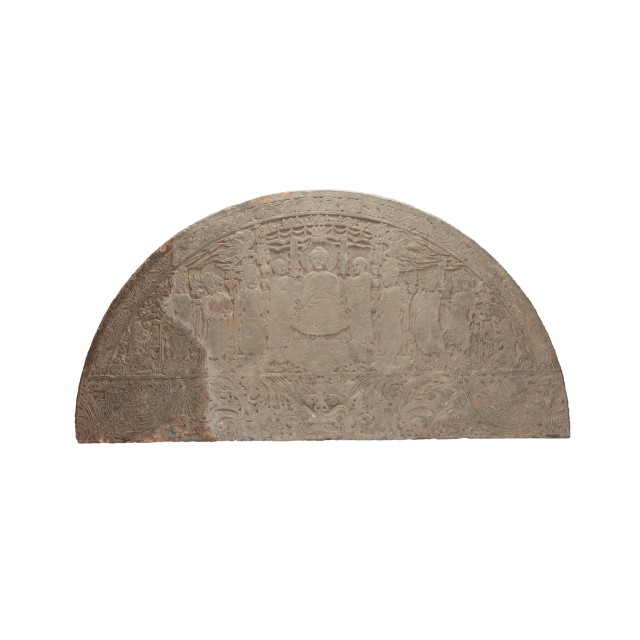
Tympanum with Paradise Scene

Photography by Synthescape, Digital image © Asia Society
Tympanum with Paradise Scene
North China
Limestone
H. 35 x W. 70 in. (88.9 x 177.8 cm)
Asia Society, New York: Mr. and Mrs. John D. Rockefeller 3rd Collection, 1979.112
Provenance
John D. Rockefeller 3rd, New York, NY; acquired from Ellsworth & Goldie, New York, NY, 1968.
The Asia Society, New York, NY, bequest of John D. Rockefeller 3rd, 1979.
Licensing inquiries
Prior to the 6th century, most Chinese Buddhist sects emphasized the necessity of working through many lifetimes to achieve enlightenment, the ultimate goal of Buddhism. Due to political instability and economic chaos in China during the 6th century, however, the desire for rebirth in a Buddhist Pure Land became a prominent feature of Chinese Buddhist thought. Pure Lands are paradises, generally understood to be way stations on the road to enlightenment and ideal worlds in which the believer has the time and luxury to practice Buddhism and then attain enlightenment in a subsequent earthly lifetime. This tympanum depicts such a paradise scene, although it is difficult to determine which of several possible Buddhas and Buddhist Pure Lands is represented. The paradise is presided over by a seated central Buddha who performs the gesture of teaching (dharmachakra mudra). The Buddha is flanked on both sides by a monk and three bodhisattvas. Two figures holding offering bowls kneel at the corners of the tympanum. The shape of this tympanum indicates that it was placed over a doorway to a Chinese pagoda, a Buddhist temple.


